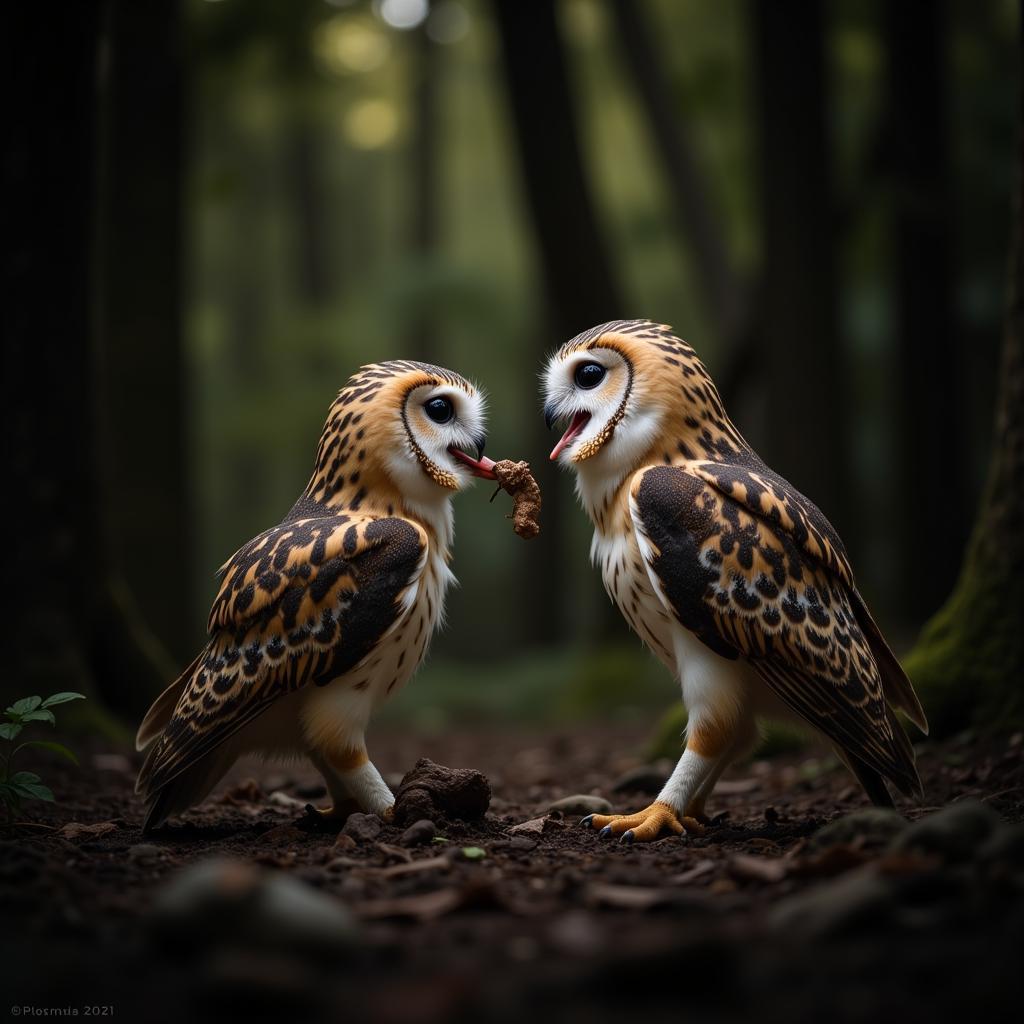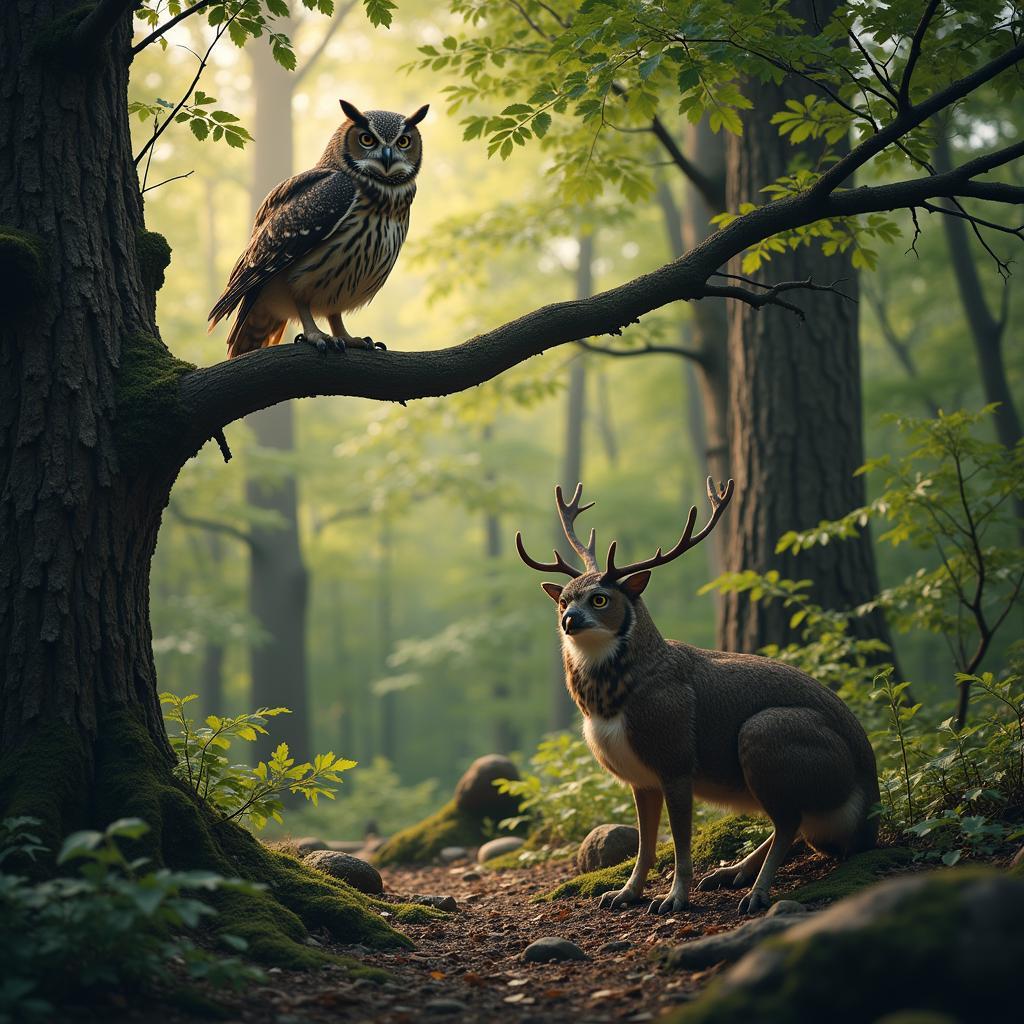The term “Owl Society” often sparks curiosity, evoking images of wise gatherings under the moonlit sky. While owls aren’t known for forming complex social structures like humans, understanding their interactions and behaviors offers a fascinating glimpse into the world of these nocturnal raptors. This article delves into the intricacies of owl life, exploring their hunting habits, communication styles, and the different ways they interact with each other and their environment. We’ll uncover the secrets of these majestic creatures, shedding light on their unique place in the natural world. For more information about different societal structures, you can visit our general society library.
Decoding Owl Communication: Hoots, Screeches, and Body Language
Owls are masters of communication, employing a variety of vocalizations and body language to convey messages to their peers and rivals. Their iconic hoots are often territorial calls, used to mark their presence and warn off intruders. Different owl species have distinct hooting patterns, allowing them to recognize their own kind. Beyond hoots, owls utilize a range of other sounds, from screeches and hisses to clicks and whistles, each with its specific meaning. They also communicate through body language, using posture, ear tuft movements, and wing displays to signal aggression, submission, or courtship.
What sounds do owls make? Owls communicate through a variety of vocalizations, including hoots, screeches, hisses, clicks, and whistles.
The Solitary Life of Owls: Independent Hunters and Territorial Defenders
While some owl species may roost together during the non-breeding season, most owls are solitary creatures, preferring to hunt and live alone. They fiercely defend their territories, using their powerful talons and sharp beaks to protect their hunting grounds and nesting sites. This territoriality is crucial for their survival, ensuring access to vital resources like food and shelter. However, even within their solitary existence, owls maintain a complex system of communication, allowing them to interact with other owls in their vicinity. The knowledge society provides more information about this topic. knowledge society.
Owl Society During Breeding Season: Courtship Rituals and Family Life
The breeding season brings a temporary shift in owl society. Courtship rituals involve elaborate displays of vocalizations, flights, and gift-giving. Once paired, owls work together to raise their young, sharing the responsibilities of nest building, incubation, and providing food for their owlets. This period of close interaction showcases a different side of owl society, revealing the strong bonds that can form between mated pairs and their offspring.
How do owls mate? Owl courtship involves vocalizations, flight displays, and sometimes the exchange of gifts, like food.
 Owl Courtship Rituals During Breeding Season
Owl Courtship Rituals During Breeding Season
Owls and Human Society: Myths, Symbolism, and Conservation
Owls have long held a significant place in human society, appearing in myths, legends, and folklore across cultures. They are often seen as symbols of wisdom, mystery, and magic. However, human activities, such as habitat destruction and pesticide use, pose significant threats to owl populations worldwide. Understanding the importance of owl society within the broader ecosystem is crucial for developing effective conservation strategies and ensuring the survival of these magnificent birds. You can explore more about the intersection of human and animal societies at our cowley county humane society photos.
What are the threats to owl populations? Habitat destruction, pesticide use, and collisions with vehicles are among the major threats.
Owl Society: A Balance of Solitude and Interaction
While the term “owl society” might not conjure images of bustling communities, it encompasses a fascinating interplay of solitary living and intricate communication. From territorial defense to courtship rituals and family life, owls exhibit a range of social behaviors that are essential for their survival. By appreciating the nuances of owl society, we gain a deeper understanding of these captivating creatures and their vital role in the natural world. We can find information about various organizations in society at the cowlitz county humane society longview.
 Owl Solitary Life and Interactions within the Ecosystem
Owl Solitary Life and Interactions within the Ecosystem
Conclusion
The “owl society,” though different from human society, offers a rich tapestry of fascinating behaviors and interactions. From their intricate communication to their solitary hunting habits and the temporary bonds formed during breeding season, owls demonstrate a unique balance of independence and connection. Understanding and protecting these magnificent creatures is vital for maintaining the delicate balance of our ecosystems. You can explore more about the role of faith-based organizations within society at catholic truth society.
FAQ
- Are all owls nocturnal? Most owls are nocturnal, but some are crepuscular, meaning they are active during dawn and dusk.
- What do owls eat? Owls are carnivores, primarily feeding on small mammals, birds, insects, and fish.
- How long do owls live? Owl lifespans vary depending on the species, but many can live for 10-20 years in the wild.
- Do owls build their own nests? Some owls build nests, while others use abandoned nests or natural cavities in trees or rocks.
- Are owls endangered? Some owl species are endangered or threatened due to habitat loss and other factors.
- How can I help protect owls? Supporting conservation organizations, reducing pesticide use, and preserving natural habitats are ways to help protect owls.
- Where can I learn more about owls? Numerous online resources, books, and nature centers offer information about owls.
Scenarios
Scenario 1: You see an injured owl. What should you do? Contact a local wildlife rehabilitator or animal rescue organization immediately.
Scenario 2: You hear owls hooting near your home. Is this normal? Owls hooting is a natural territorial behavior. If you’re concerned, you can learn more about the owl species in your area.
Further Exploration
For more information on related topics, please visit these pages:
- Owl Conservation Efforts
- Understanding Bird Communication
- The Role of Raptors in Ecosystems
If you need any assistance, please don’t hesitate to contact us.
Phone Number: 02043854663
Email: [email protected]
Address: Khu 34, Bac Giang, 260000, Vietnam
Our customer service team is available 24/7.